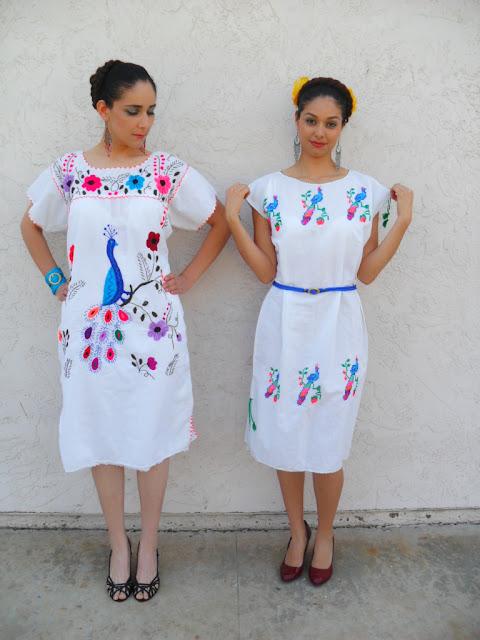Today is Cinco de Mayo and as an American from Mexican descent I am proud to celebrate my cultural heritage. Cinco de Mayo is NOT Mexican Independence Day and surprisingly enough it is not celebrated in Mexico Mexico United States Mexico Britain and Spain agreed to these terms, France did not and invaded Mexico Mexico France
In celebration of Mexican culture and remembrance of its' traditions today I am wearing one of many traditional dress forms, this one is known as a ‘vestido bordado.’ I have six different dresses of this type which were made by my paternal grandmother in Mexico
There are dozens of these dresses ranging in style, patterns, embroidery, and textiles. Each region, state, and even smaller towns have their own styles and unique textiles. For instance, the popular embroidered flower designs, revealing pre-Hispanic influence, are attributed to the southwestern regions of Mexico Mexico Valley of Oaxaca Valley of Oaxaca Oaxaca Valley of Oaxaca has a significantly large indigenous community and in an effort to preserve Mexico
The practice of this craft is deeply rooted in Mexican culture and traditions. It is estimated to have been around since at least 1400 BCE. Of course, with the introduction of mechanized weaving in 1910, the authentic making of textiles and design of dresses have drastically changed but nonetheless the continued production and/or making of these splendid and meaningful dresses (some being more authentic than others) serve as a reminder of Mexico’s history and cultural richness.
Interesting fact: Mesoamerican cultures (early indigenous in Mexico













gorgeous girls...gorgeous dresses!
ReplyDeletethanks for sharing this warm story about your family tradition..
I didn't notice any off the shoulder photos!
Hello. I was wondering if you could tell me where you found these dresses? I need to purchase several (about 30) in different sizes.
ReplyDeleteI look forward to your reply: axmadrigal30@gmail.com